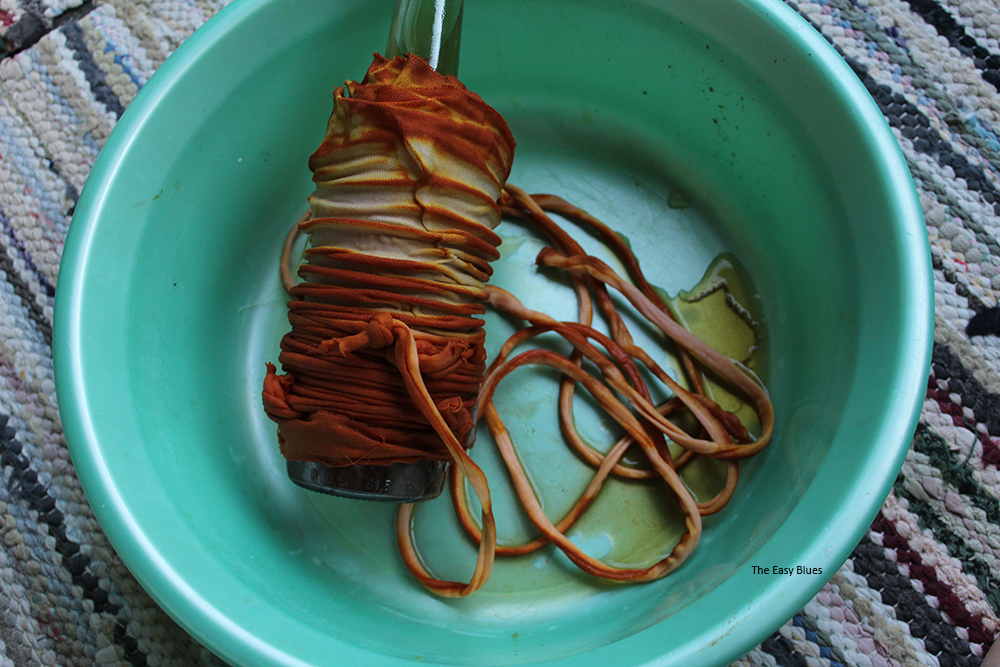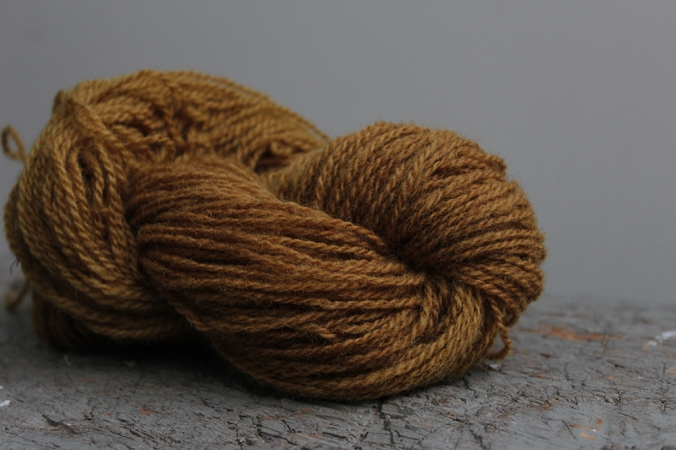
I have been saving up onion skins the whole spring and summer and finally I had enough to do an onion skin dye. Onion skins were one of the very first things I tried natural dyeing with. They are so easy and you get a very strong, lasting and vibrant colours. They don’t necessarily need an mordant and at least for me they work every time! And they are easy material to collect, very beginner friendly. I’m obsessed with mordanting so I mordanted my cotton with tara powder and alum, there is a post about it here. There is also an old post I wrote about dyeing wool yarn with onion skins here.

The new thing I’m interested in is shibori dyeing. I really don’t know much about it so I’m still learning. I think for some of the things I did use a bit too thick fabric. I bought this old sheet from the flea market and that’s what I have been using for all of my dyeing experiments. I used a you tube tutorial from Blueprint to do these shibori folds. I had to improvise a bit though.

Onion dyeing is very simple. You can pre soak the onion skins in cold water for anything from two hours to a day (or as long as you want). This time I skipped that step and just gently boiled the onion skins in my 10 litre pot for two hours and then filtered the skins away. I pre soaked the things I wanted to dye before adding them to the pot. Making sure they have enough room to move around in the pot.
I like to keep the temperature around 80-90 degrees celsius, it does not need to boil terribly. With wool yarns especially its good to keep an eye on the temperature as wool does not like to be boiled. Cotton of course is not so sensitive. After two hours I turn off the heath and let things cool down before I take them away from the dye. Then I rinse them with water until there is no more excess dye in the rinsing water.

The first photo below is my second try with the bottle twisting shibori (I believe it’s called arashi-shibori?). I tried to do just one fold because with my first try (second photo) there were way too many folds and the dye just didn’t go through. I’m learning that with this kind of shibori thinner fabrics work better. The third one is the folded one where I used some chopsticks and the last one is the hand sewed one.


The good thing about onion skin dye is that you can easily use the same dye bath multiple times. I usually always try to do at least two dyes with any natural dye. This time I did three and I probably could have done more.

I had to fill me bottle with water so it would not float in the dye bath. This bottle was also the only thing small enough to fit in to my dye bath. I think I got the shibori bug now and I need to try some more.






























